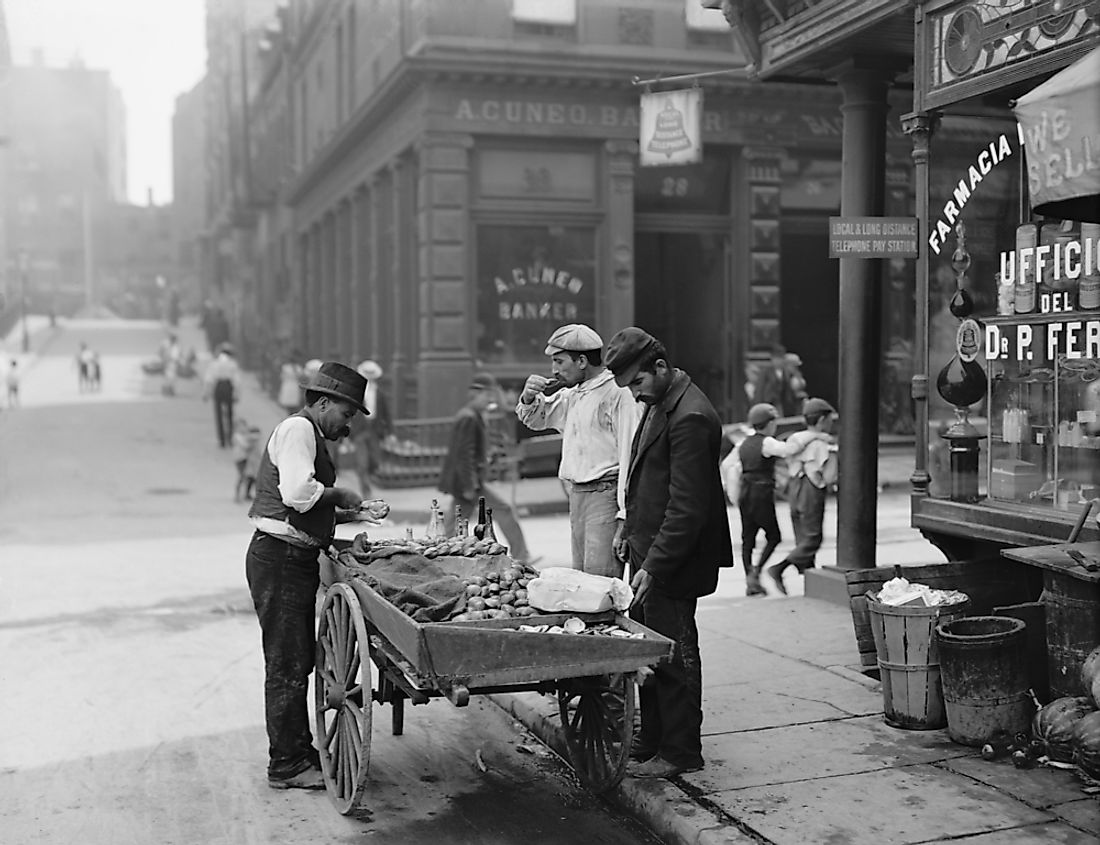Five Points, Manhattan

Five Points, Manhattan
The Five Points was a name given to a neighborhood that existed in Lower Manhattan, New York in the 19th century. It had gained notoriety over its existence for crime and urban squalor. The neighborhood was defined as bordered by the Central Street, Bowery, Canal Street, and Park Row, where it now exists Civic Center and Chinatown. Its name was derived from the five-pointed intersections that were created by Orange (Baxter) Street and Cross (Mosco) Street. Anthony (Worth) Street began from the intersection and ran northward. The little Water Street which is not in existence today ran from north to south forming the Paradise Square.
A Doomed Beginning
The terrain of the location that became the Five Points contributed to its deterioration from middle-class residential to a disease-infested slum. The Collect Pond was a water body occupying 48 acres and was 60 feet deep. The pond was located in a section of the U-shaped Valley at the tallest hill in Lower Manhattan. Collect Pond was a major source of water for the residents of New York, and several commercial industries were constructed on the shores of the pond in the 18th century including breweriea, tanneries, pottery works, and slaughter houses. Waste material from these businesses found their way into the pond creating serious pollution and environmental hazards. A proposal to clean the pond and make it a recreational park was put forward by Pierre Charles, but it was rejected. However, it was decided that the pond would be filled with the completion of the landfill in 1811 and soon after middle-class residential developments were constructed on the reclaimed land. The fill on the pond was done poorly with buried plants releasing methane gas. The ground soon sunk, and houses shifted their foundation. The roads were buried in mud mixed with human and animal waste. The stagnant pool of water provided a breeding ground for mosquitoes. Most of the people who could leave fled the area. However, immigrants began to arrive in the 1820s and climaxed in 1840s with the arrival of Irish Catholics who were running away from the Irish Potatoes Famine.
A Sharp Decline
Five Points was characterized by high population density, diseases, unemployment, crime, prostitution, and high infant mortality. It is considered the origin of the American melting point which began by inhabitation b emancipated blacks and Irish who were deeply marginalized within society and discriminated against. Five Points sustained a high number of murders of any slum in the world with one murder a night for 15 years. Epidemics such as cholera, typhoid, and yellow fever plagued the neighborhood due to the poor sanitation, overcrowding, and lack of basic health facilities. Several diseases that swept through the city of New York originated from the Five Points.
The Current Site
The area that was formerly the site of the Five Points is currently covered in part by the large city, state, and federal administration building collectively known as Civic Center and several facilities of the New York City Department of Correction. The correctional facilities like Tombs Prison have a direct link to the Five Points which many criminals from the neighborhood were incarcerated. The eastern and northeastern parts of the neighborhood are part of the Sprawling Chinatown.











